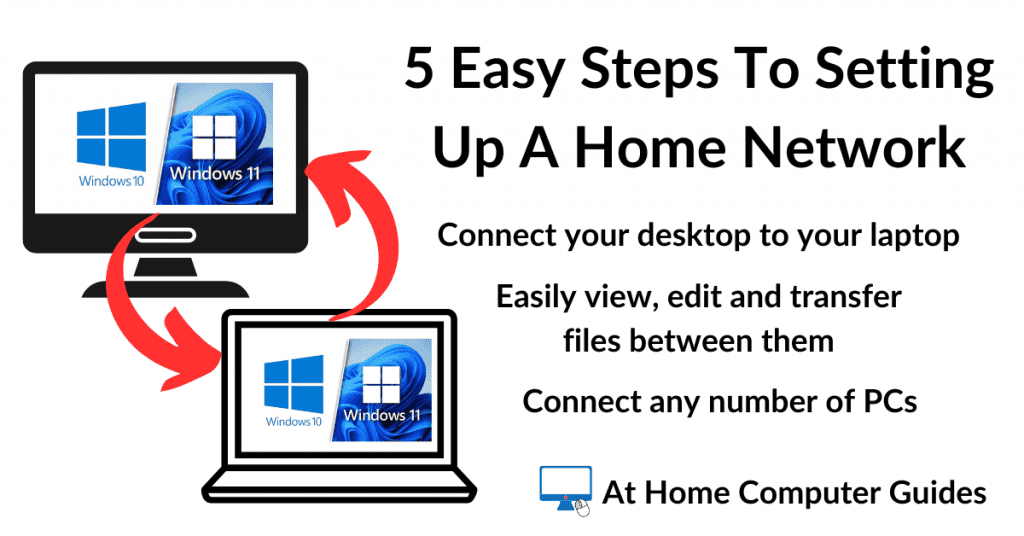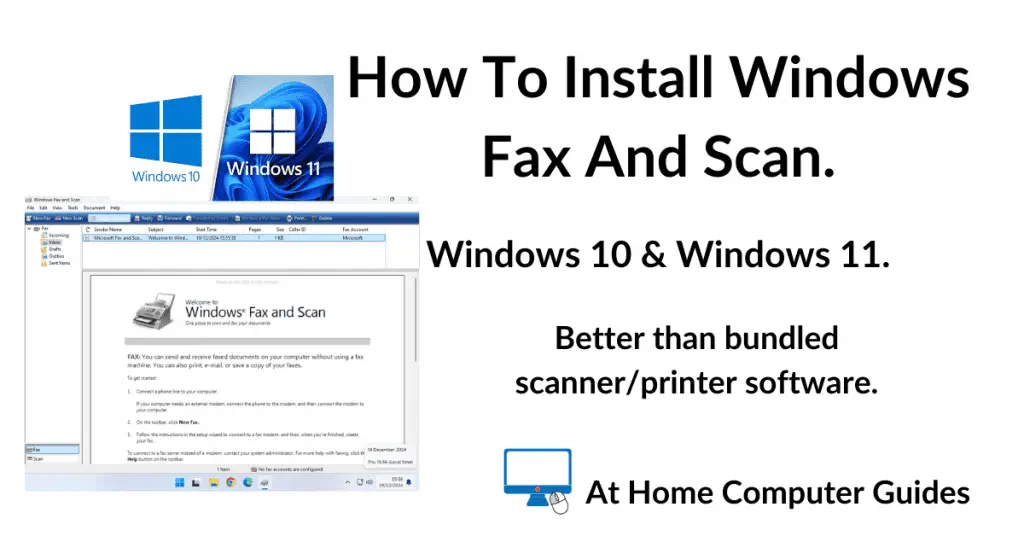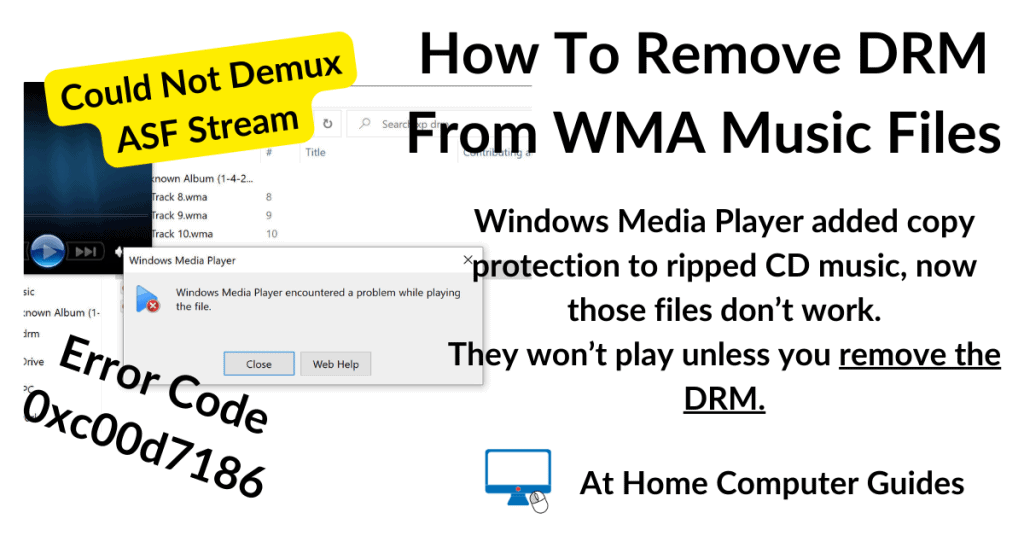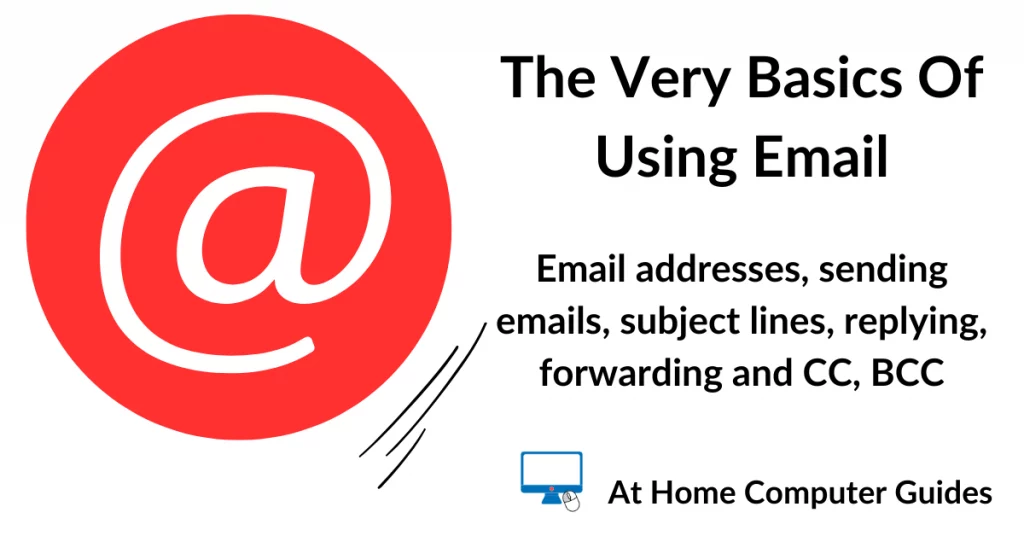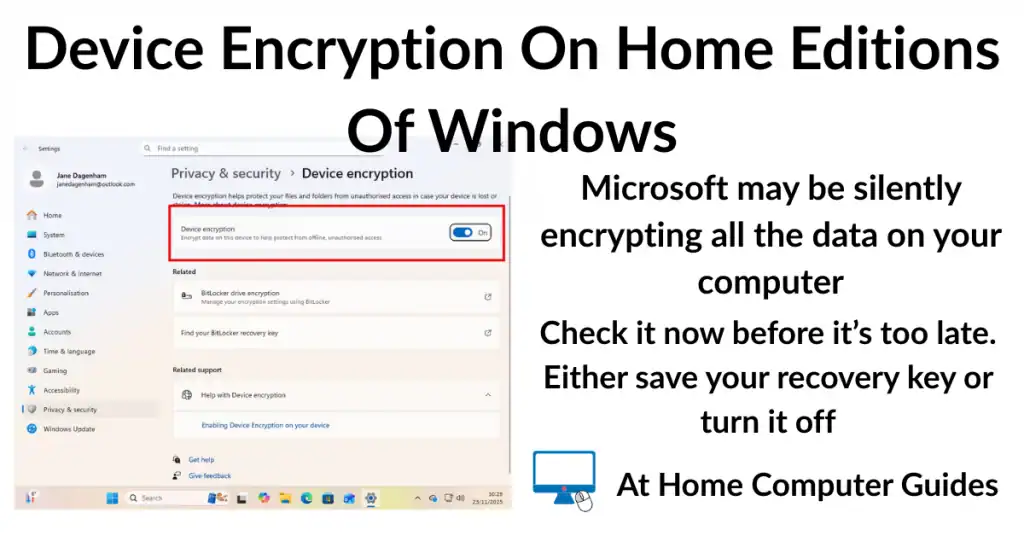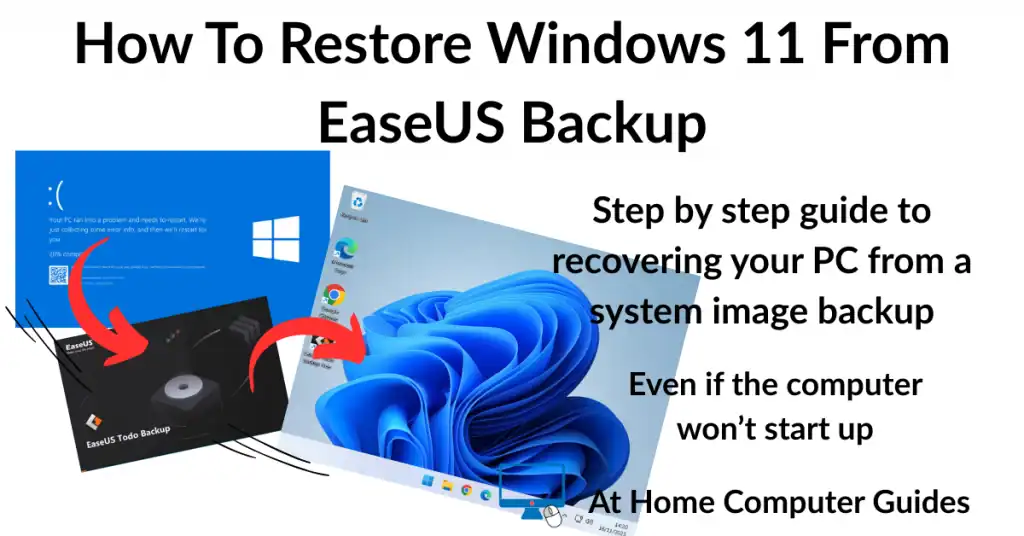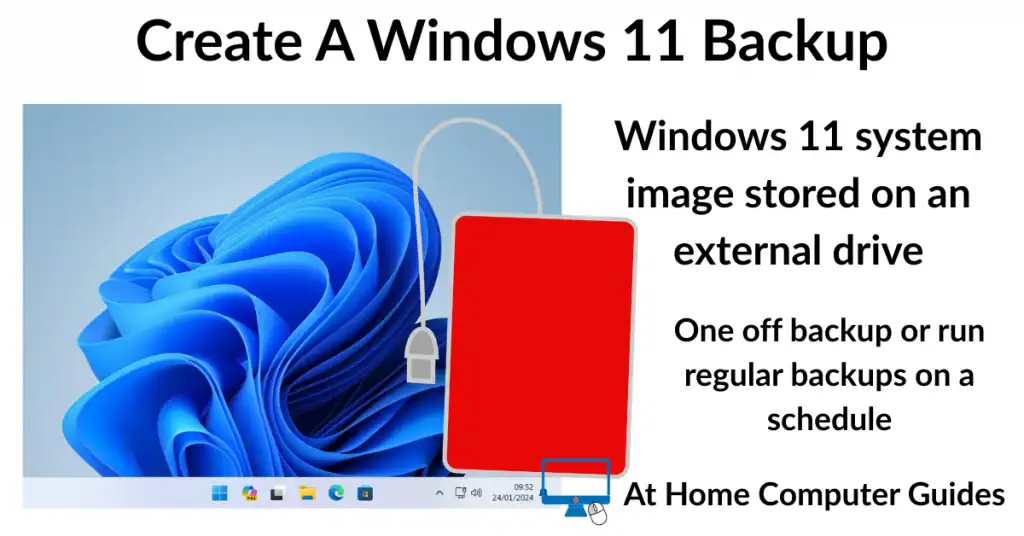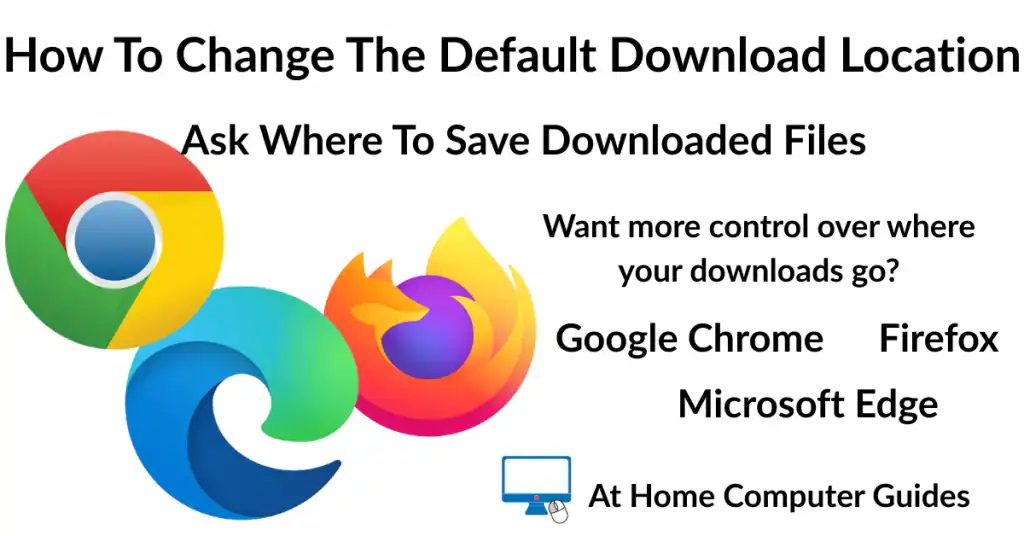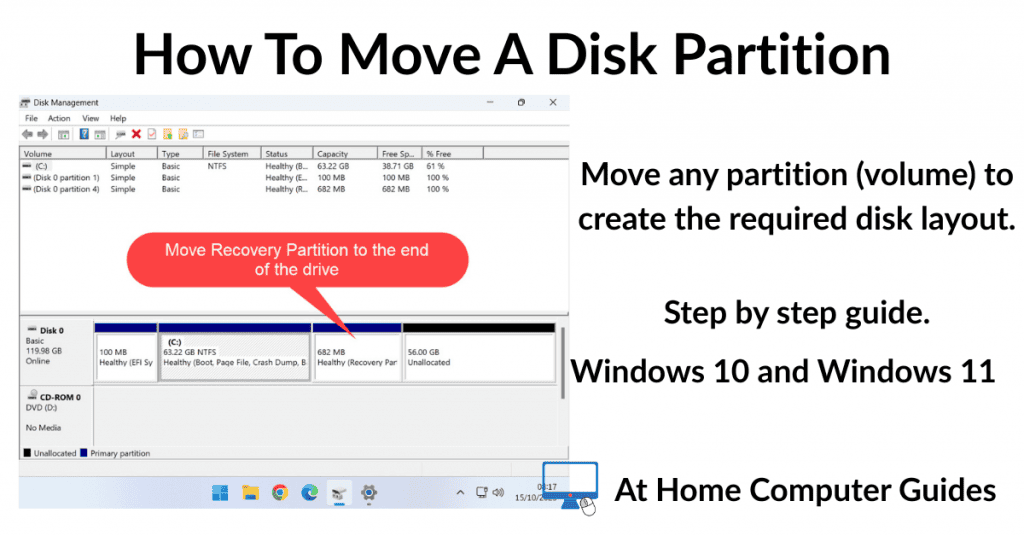To get started with using email effectively, you’ll need to know some of the email basics.
In this email for beginners guide, we’ll look at a few of the fundamentals of using email on your home computer. The stuff everyone should know.
Email Basics.
We’ll kick off this guide by looking at email addresses because this is something that really does trip a lot of people up.
When you don’t actually send that many emails, it’s easy to get this wrong. And when it comes to sending an email, it’s probably the single most important thing to get right.
Quite simply, if you don’t address the email correctly, it won’t be delivered. Email systems won’t guess what you meant. If it’s not addressed correctly, it won’t be delivered.
Don’t Use Spaces In Email Addresses.
A basic principle of email addresses is that they are typed as one continuous word. There are no spaces at all. Each number, letter, or symbol of the address simply follows on from the previous one.
This is why you’ll often see dots, underscores or hyphens used to separate words to make them easier to read, and therefore, easier to remember.
When you’re typing an email address, don’t use the spacebar on your keyboard.
Using Capital Letters In Email Addresses.
Capitals letters, on the other hand really don’t matter. Email services will just ignore capital letters. They’re seen as lower case.
The convention is to type email addresses entirely in lower case. No CAPITALS. But it really doesn’t matter, if you do throw in a capital letter by accident, no worries, it’ll still work fine.
Basically, email addresses aren’t case-sensitive.
A Basic Guide To Sending An Email.
Now that we know the basics of email addresses, we’ll go through the process of actually sending an email.
To get started with sending an email, log in to your email account. Then you need to look for the new message button. The exact wording of that button will vary depending on the email service you’re using, but it’s generally in the top left of the screen.
Look for a button labelled something like Compose, New, New Message, etc.
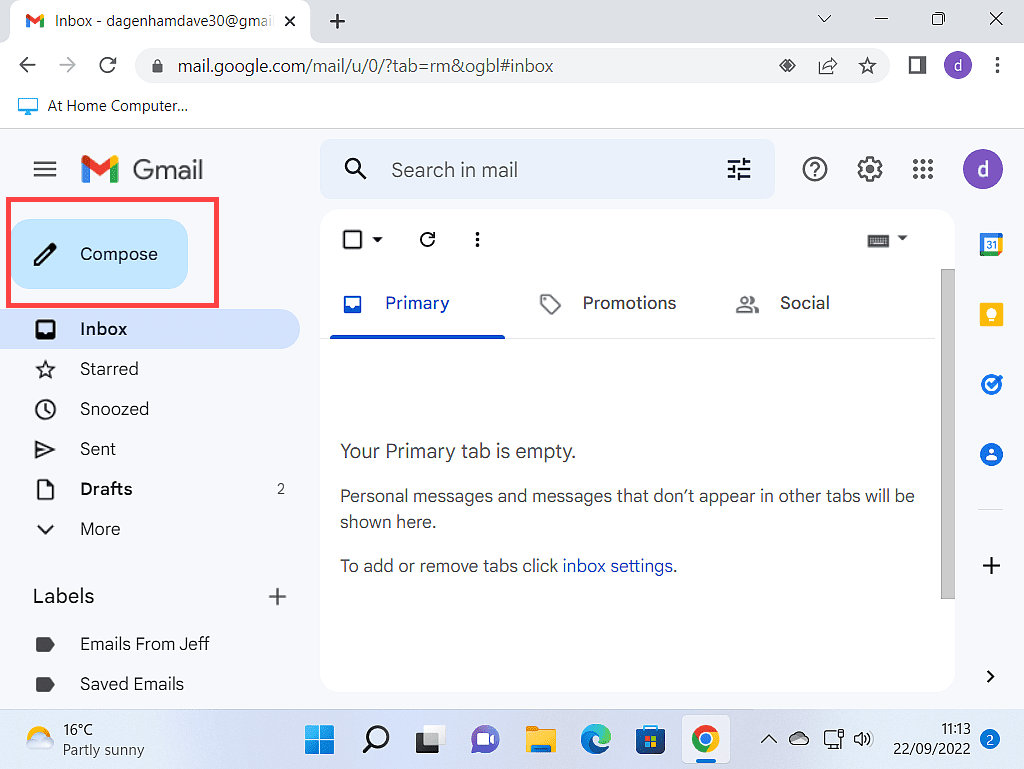

The New Email Window Opens.
After clicking the New Email or Compose button (or whatever it’s called in your service) a new window will open.
The new email message window has three basic sections.
- To – That’s the address line where you’d type (or paste) the email address of your intended recipient.
- Subject – A brief description of what the email is about. It’s better to type something in here than to leave it blank.
- The Body – This is where you’ll type out your message.

Email Basics – The Address Line.
Whenever you enter a new email address, an email address that you haven’t used before, your email service will generally add that address to your list of contacts.
If you then send another email to the same address, as you begin typing, you’ll see that person’s address appear as a pop-up. All you need to do is to left-click once on the popup to have the address automatically entered.
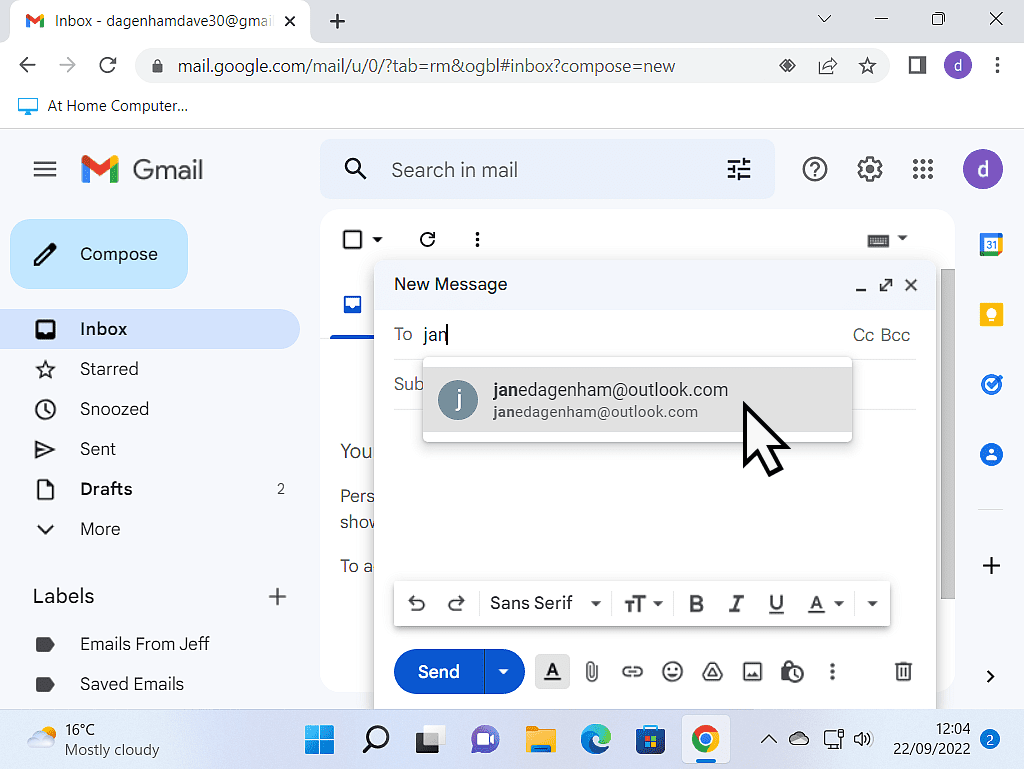
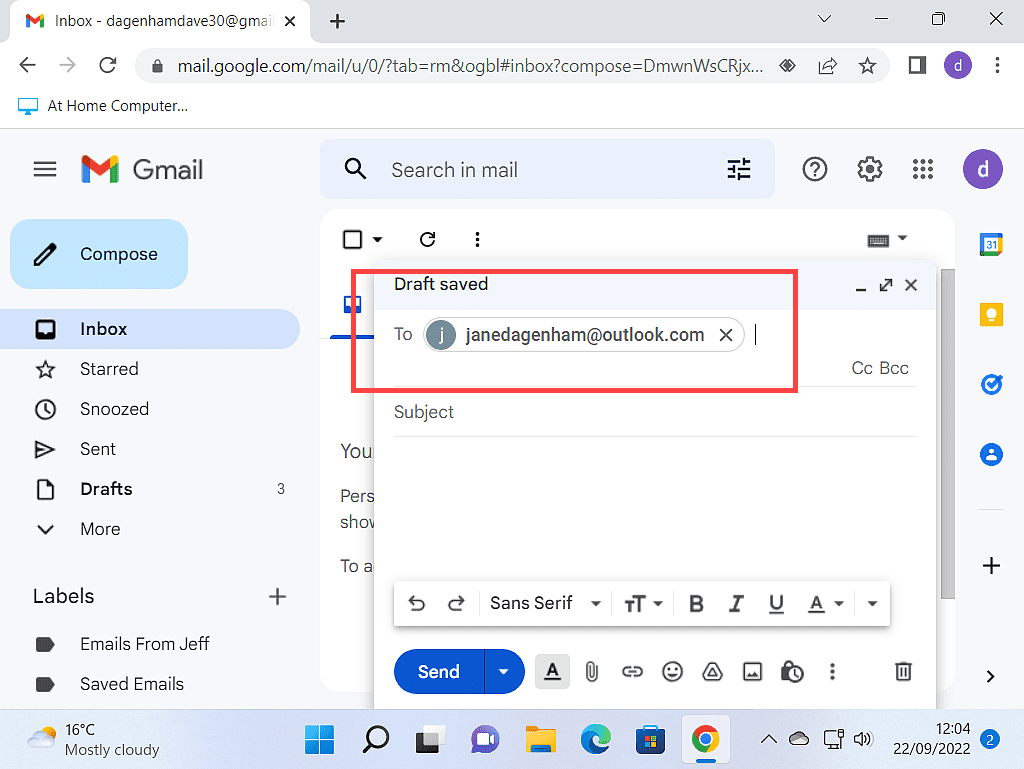
What Are Cc And Bcc?
Usually, you’ll find the Cc and Bcc buttons somewhere around the address line when composing a new email. Cc stands for Carbon copy and Bcc stands for Blind carbon copy.
You’ll use them when you want to send the exact same email to several different people at the same time.
Clicking either the Cc or Bcc buttons allows you to enter more than one email address.
It’s useful for when you’re trying to get a party organised, or a meet up etc.
For example, this email is addressed to Jane, while Dave and Bob have been “Copied in”. Meaning they will receive the same email.
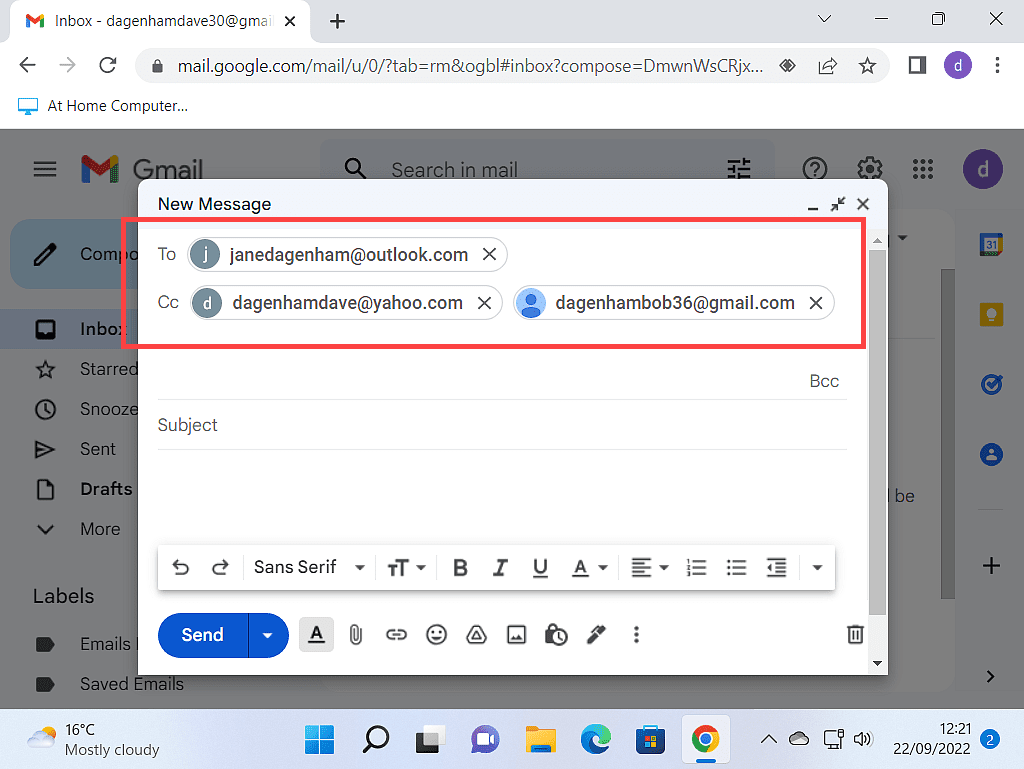
What’s The Difference Between Cc and Bcc?
If you use Cc, then the recipients will be able to see who else received the email that you’ve sent.
Bcc hides that information. So the recipient won’t be able to see who else you sent the message to.
Email Basics – The Subject Line.
The Subject Line is displayed when in the recipients Inbox. It’s usually just a few words to describe what the message is about.
It helps to draw attention to an email and to determine if you’re going to read the email or not.
When you’re sending emails always enter a subject. It doesn’t have to be anything special, but it should be there.
If you’re sending an email to friends and family, you could just go with “Hi it’s Jeff”.
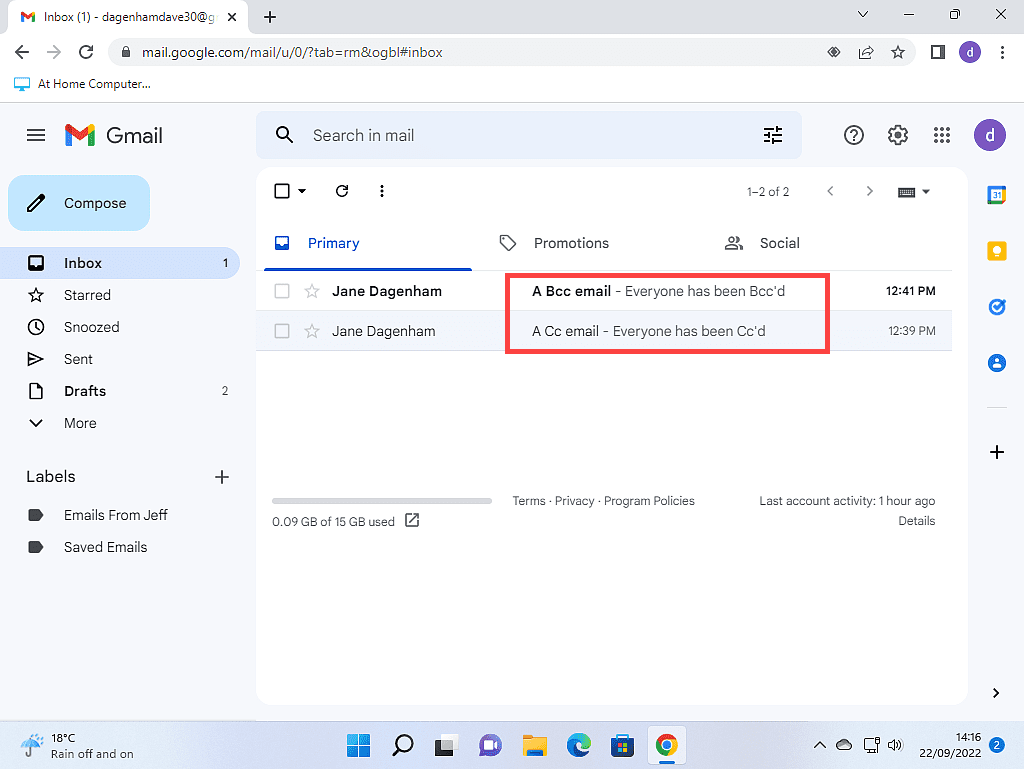
Always Try To Add A Subject.
Another reason for entering something in the subject line is that most email providers/services scan emails for spam.
An empty subject line is a red flag to their filtering systems that the message may be spam.
So if your email is sent without a subject, could well end up in someone’s spam or junk folder rather than their Inbox.
Email Basics – The Body Text.
The body text is where you’ll enter your message. It can be long or short. It all depends on what you have to say and who the email is being sent to.
The body text is where you’ll enter your message.
It can be long or short. It all depends on what you have to say and who the email is being sent to.
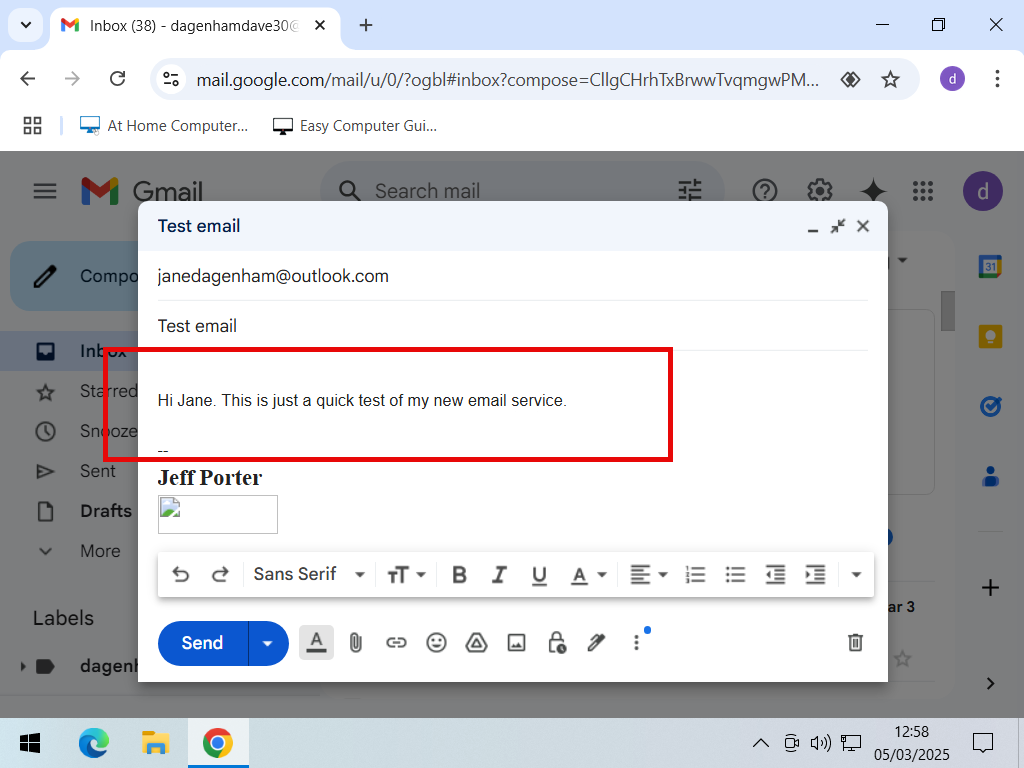
Replying To And Forwarding Emails.
The final topic in this basic guide to using email is the Reply and Forward buttons.
The Reply button does exactly what it says. When you receive an email that you want to send back a reply to, you can simply click the Reply button and the email address of the sender will automatically be entered into the address line.
When replying to emails, the sender’s original message is also entered into your reply email. That way, when they receive your reply, they can easily see what they wrote to prompt the reply.
The Forward button does something completely different. Forwarding an email means that you’ll send it on to someone else. You’ll obviously have to fill in the email address of the person you’re sending it to.
The Reply button is usually represented by an arrow turning (or bending) to the left and the Forward button is represented by an arrow turning to the right.
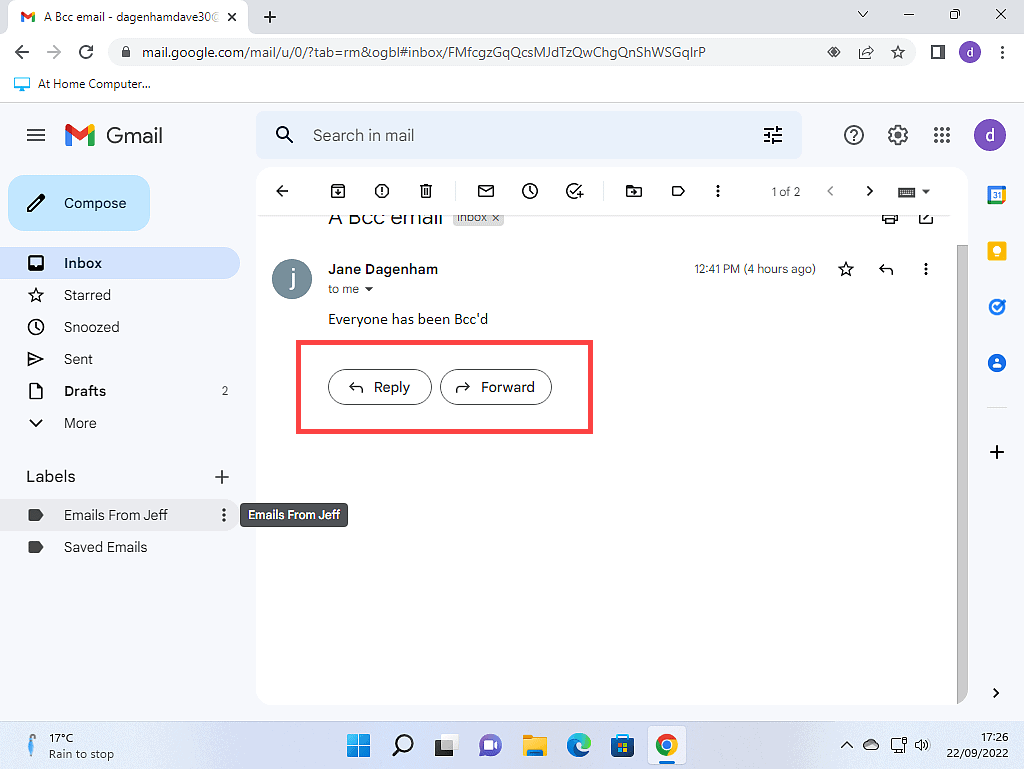
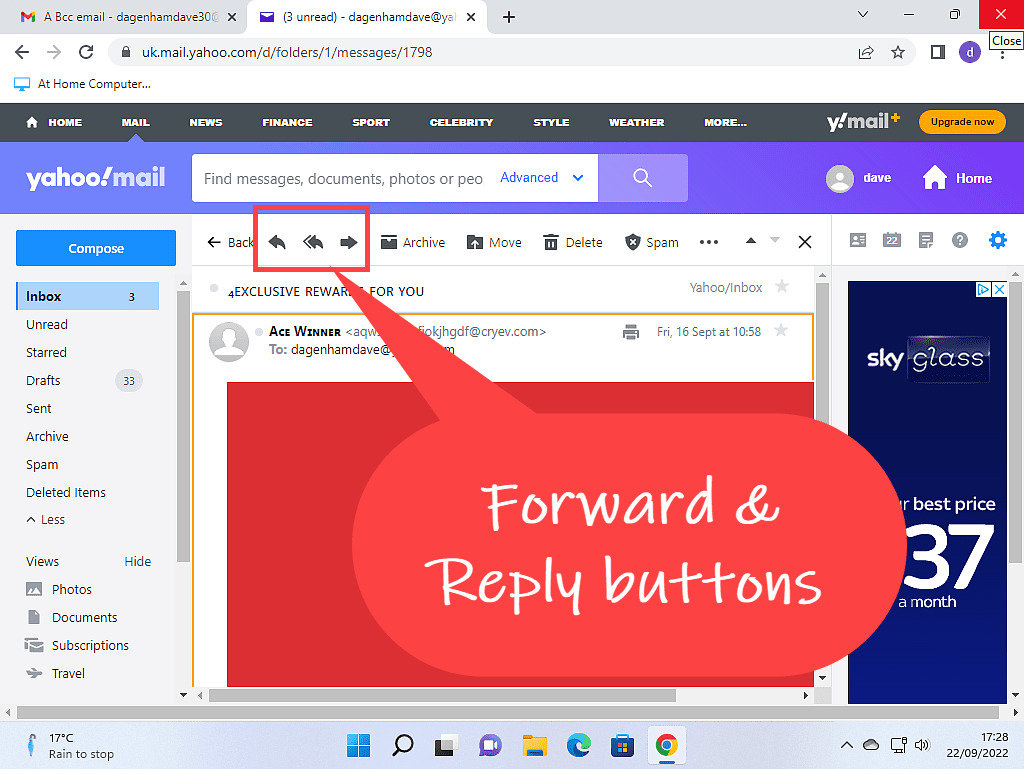
Summary
Using email isn’t that difficult once you’ve grasped the basics. It’s always worth having a little practice though, just to see how things work.
To that end, you can either rope in a friend or family member to bombard with practice messages or possibly better, email yourself. You can enter your own email address in the address line. The message will go out and then come back in. That way, no one else can see your mistakes.
Extra Email Guides
How To Block Emails On Yahoo Mail
If you have a Yahoo email account you can stop senders of annoying and offensive messages in their tracks.
How To Block Email In Outlook
Or if you use Outlook.com you can do the same thing. Stop them.
How To Forward Emails To Another Account
Do you have more than one email address? Save yourself time logging in to them one by one, have all your messages forwarded to just one inbox.
Popular At Home Computer Guides
The most popular step by step guides for your home computer.
